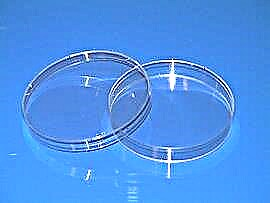Diseases of the cardiovascular system remain the leading cause of death in the Russian population (57% of all cases). And these figures are among the highest in the world. According to pathological studies, 2/3 of cardiac deaths are due to coronary artery disease. Cardiovascular pathologies entail disability. The urgency of the problem is confirmed by the fact that patients die at working age (25–66 years). By gender, the majority of those killed are men.
Main cardiovascular pathologies and their causes
Cardiovascular diseases are a group of pathologies that include diseases with functional disorders of the myocardium, blood vessels, arteries and veins. Semiotics and their clinic are varied.
Classification of pathologies:
heart diseases;
- changes in veins and arteries;
- hypertonic disease.
List of cardiovascular diseases:
- arterial hypertension;
- Ischemic heart disease;
- thrombosis;
- thromboembolism;
- atherosclerosis;
- inflammation of the myocardium;
- vices of various origins;
- heart attack;
- stroke;
- arrhythmias;
- cardiosclerosis;
- VSD;
- cardiomyopathy;
- collapse;
- hypotension;
- pulmonary heart;
- myocardial dystrophy;
- NK;
- cardiopsychoneurosis;
- cardiac asthma;
- angina pectoris.
Characteristics of the main reasons for their development:
- atherosclerotic lesion;
- infections;
- genetic predetermination;
- trauma with bleeding.
Risk factors for CVD
Among the risk factors for the development of diseases of the cardiovascular system are:
hypertension;
- abuse of alcoholic beverages;
- smoking;
- hypodynamia;
- vegetative-vascular syndrome;
- the wrong choice of food;
- harmful production factors;
- pathology of other organs and systems;
- stress;
- lipid metabolic disorders;
- endocrine pathology (diabetes, menopause).
Many factors are subject to correction, but in addition there are positions that cannot be influenced, for example, a person's age (elderly), genetic predetermination (male gender).
Prevention of CVD and its essence
At the heart of the prevention of diseases of the heart and blood vessels is the modification of a person's lifestyle. It is necessary to remove bad habits, introduce into the routine of playing sports, adjust body weight, adhere to a low-salt diet. It is important to vitaminize food. Patients with myocardial infarction should be on a low-calorie diet.
It is important to prevent and promptly treat infectious diseases in order to prevent rheumatism resulting from damage to the body by group A beta-hemolytic streptococcus. Cardiologists insist on compulsory influenza vaccination of persons with an increased risk of CVD.
Dispensary examination, which includes fluorography, ultrasound, ECG, should not be ignored.
It is necessary to independently monitor blood pressure while maintaining its normal values (with the help of antihypertensive drugs).
Basic diagnostic methods for cardiovascular pathology
Physical examination of the patient remains the leading practice in cardiology.
The process includes:
- general examination of the hands, face in order to identify the characteristic pallor, puffiness, cyanosis, hemorrhages under the nails, jaundice;
- fundus examination;
- heart rate monitoring;
- pressure measurement;
- palpation of GC;
- listening.
Description of instrumental diagnostic methods:
The main non-invasive method is ECG. The method is approved for all groups of patients, including during pregnancy. According to its indicators, the conductivity, excitability and contractility of the myocardium are judged.
Holter monitoring is used in both adults and children. It detects rhythm disturbances, atrioventricular blockade, weakness of the sinus node.
Cardiointervalography is a method that mathematically analyzes the heart rate and gives an idea of the adaptive-compensatory reactions of the body.
EKG-VR is a promising method for assessing the electrical instability of the myocardium in order to predict the development of arrhythmias.
With phonocardiography, tone-noise indicators are recorded.
Echocardiography demonstrates anatomical and hemodynamic norms.
Radiography of the HA organs provides visual information about the structural system of the myocardium, as well as the usefulness of pulmonary blood flow.
MRI is the most objective method in order to obtain detailing of cardiac structures with the definition of pathologically altered tissues.
Cardiological research profile for cardiac patients:
- lipid factor;
- coagulogram;
- AsAT;
- creatine kinase;
- KFK-MV;
- LDH;
- general therapeutic blood test.
New principles in the early detection of CVD:
- determination of the amount of circulating atherogenic particles;
- ApoB;
- ApoB / ApoA ratios.
Laboratory capabilities in establishing the diagnosis of myocardial infarction:
- modified albumin;
- glycogen phosphorylase BB;
- BSZhK;
- hsCRB.
Invasive methods of examination of the heart and blood vessels:
- catheterization. The purpose of the manipulation is to measure blood pressure, assess the gas composition, stroke volume of structures, phonocardiography;
- angiocardiographic studies. Tasks - assessment of blood vessels, valves, myocardial walls;
- coronary angiography. Examination of the coronary artery.
Key points of screening for a cardiovascular patient
In the Russian Federation, patients are identified according to the SCORE scale:
- low activity;
- premature development of CVD in relatives;
- social and emotional disadvantage;
- SD;
- low HDL-cholesterol and high triglyceride levels;
- signs of preclinical atherosclerosis in asymptomatic individuals.
The main methods of treatment
The following pathologies require constant intake of pills:
Ischemic heart disease;
- non-fatal MI;
- CHF;
- arrhythmia;
- hypertension;
- angina pectoris;
- prevention of atherosclerosis.
Surgically treated:
- aneurysms;
- vices;
- myocardial revascularization;
- aortic lesions with prosthetics;
- rhythm and conduction disturbances.
Minimally invasive techniques are used to treat the following cardiovascular diseases:
- atherosclerotic lesions of the aorta;
- aneurysmal formations.
Conclusions
The 21st century is characterized by an epidemic of cardiovascular pathologies. Despite the development of medicine, mortality from them is still very high.
It is not only about the introduction of current treatment technologies, but also about raising the degree of consciousness of people. After all, the prevention of CVD is a complex medical and social problem. A healthy lifestyle, attention to well-being, a stable visit to a doctor, adherence to spa treatment are the main components of longevity.



